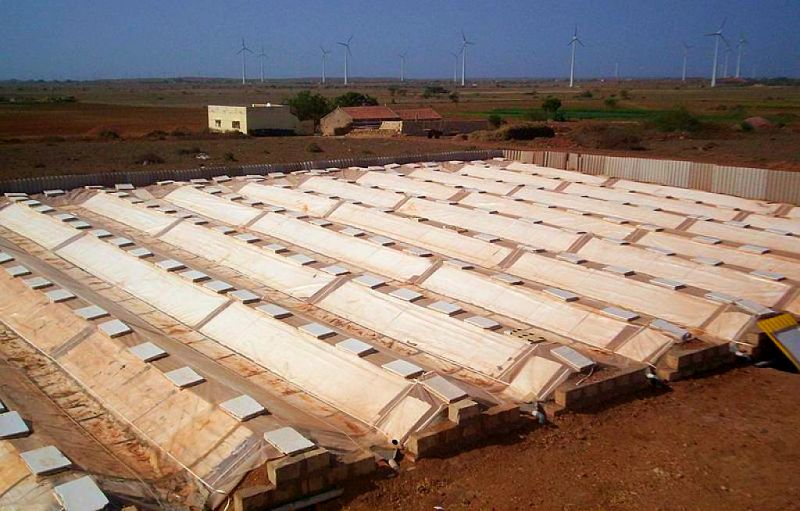Indian Scientists Develop Technology for Harvesting Water from Dew
Published on by Water Network Research, Official research team of The Water Network in Technology
A suitably designed dew-cum-rainwater harvesting plant can potentially harvest 320- 325 mm of rainwater and atmospheric moisture during a year.
A group of Indian scientists, working with experts from France, has developed technology for harvesting dew or atmospheric moisture for drinking water purposes and shown that it can be a cost-effective option in water-stressed regions like Kutch in Gujarat.
India’s first potable water production plant designed to harvest atmospheric moisture and process it into drinking water has been set up at Kothara village in the Kutch region. It has a capacity to process an average 500 liters of water daily.

Dew harvesting can provide water in water-stressed regions
(Credit: Girjasharan/Wikimedia Commons)
The dew harvesting technology involves harvesting dew using specially designed condenser panels, storing raw water and putting it through the filtration process. When conditions for dew formation are right – clear sky and humid coastal breeze- the panel surfaces cool to dew point temperature causing condensation to occur. Condensing water flows down sloping sides by gravity into a central channel.
Condensation can occur over several hours of the night often extending to early mornings. The collected water is then put through a multi-stage filtration and purification process. The filtered and purified dew water has been found to meet WHO standards.
“The condensation panels mimic the condensing behaviour similar to those of plant leaves and blades of grass,” explained Anil K Roy, a member of the research team and an associate professor of physics at the Dhirubhai Ambani Institute of Information and Communication Technology (DAIICT), Gandhinagar.
The condenser field, which looks like a solar plant, is made of 30 rows of condenser panels, each 18 meter long and 1 meter wide. These panels are sandwiched with 25 mm thick styrene foam board in the middle and wrapped around with the special plastic film. The panels are mounted on angle iron frames at a height of 1.5 meter from the ground.
Source: Down to Earth
Media
Taxonomy
- Water Supply
- Water Harvesting
- Water Supply
- Water Supply Design
- Water Harvesting Structure Design
- Water Supply Regulation
- India
2 Comments
-
Is 70% of Delhi Water Unsafe for Drinking?
Almost 70% of samples collected in Delhi, tested by MCD a few years ago were found to be impure. A recent study by Consumer Voice found that most of the water was fit to drink. Why and how?
Presentation well below reality since the entire supply drinking water to the India is unfit for consumption.
But nowadays the almost all the water potablede the Earth, stored in the groundwater is polluted to varying degrees of pollution, unlikely to consumption
-
Hello I am very surprised that scientists can initiate such proceedings. It's well know the drinking water - biological - feature. Produce water nature is do in many forms. but produce drinking water containing all the necessary elements to the energy needs of the human body the man can't do. Another idea to against sense of life on our planet.
We must add to these scientists who want to reuse wastewater liquid to make it consumable water despite all - biochemical - impurities they contain. Such reuse will increase some chemical component making them dangerous.